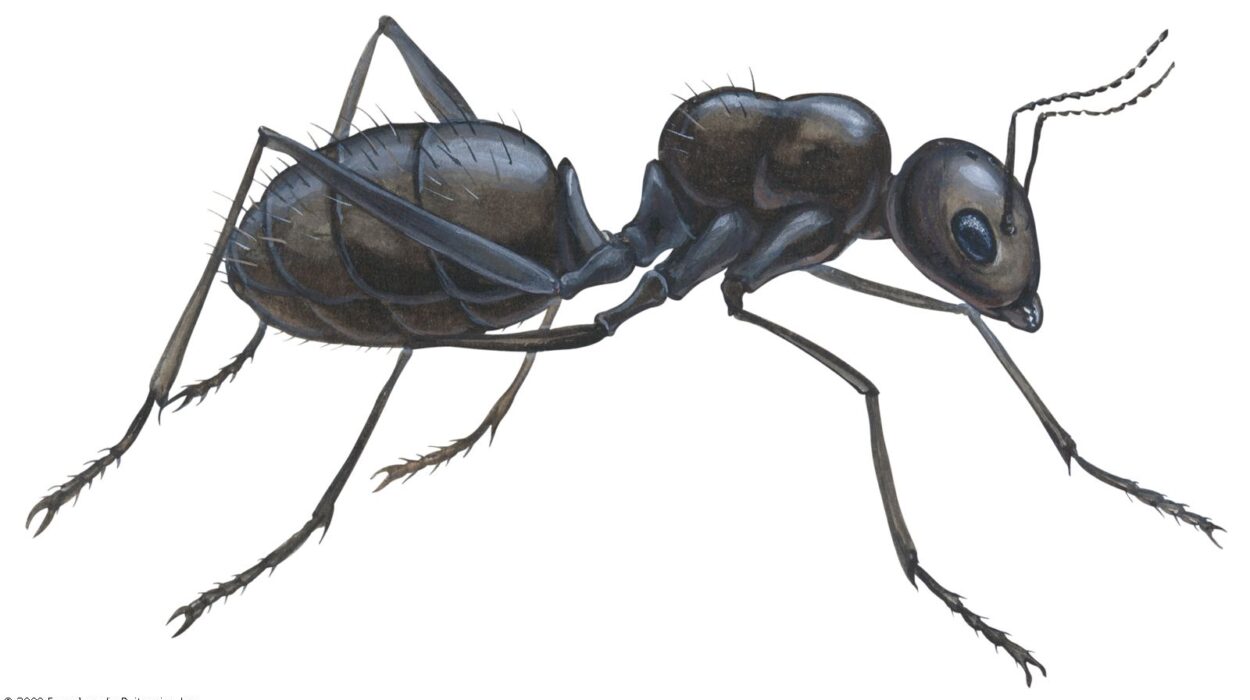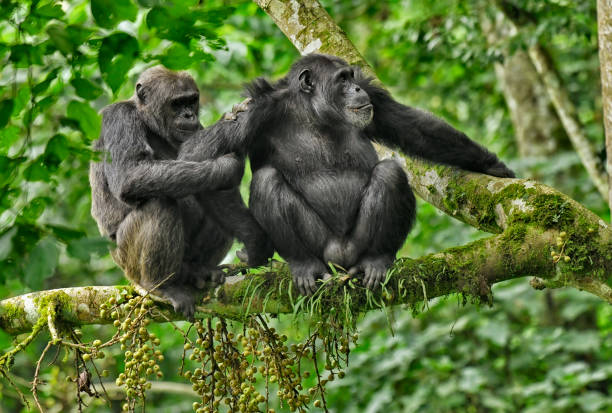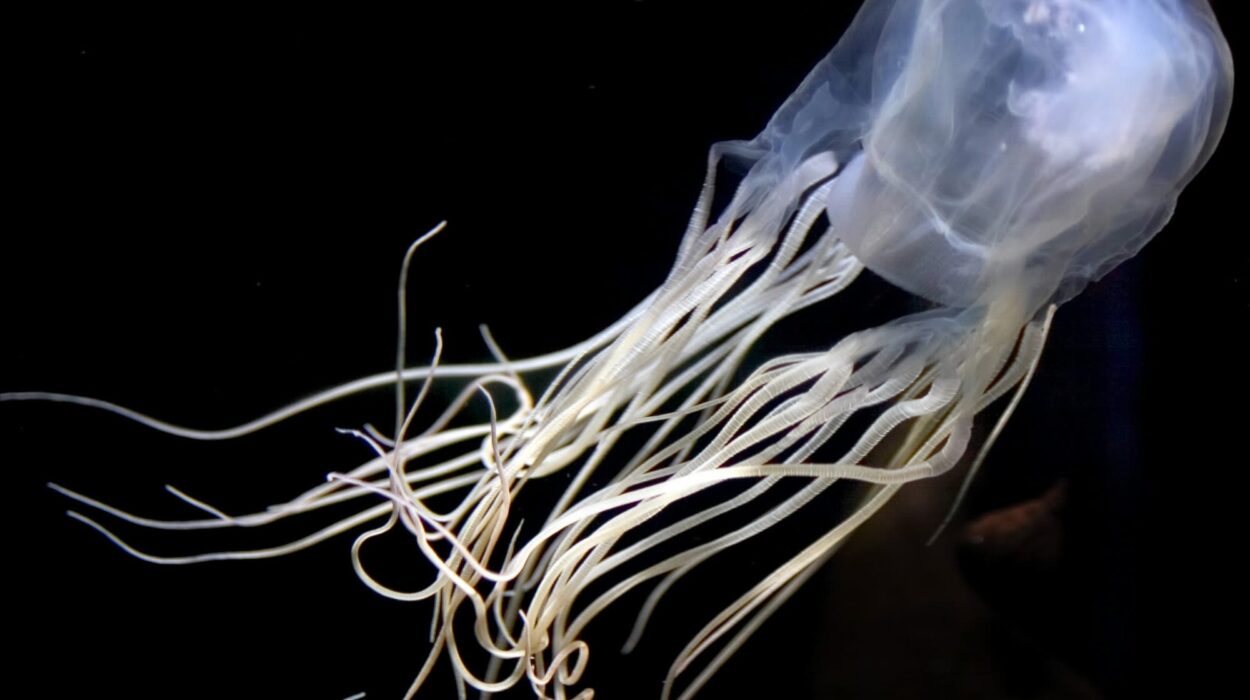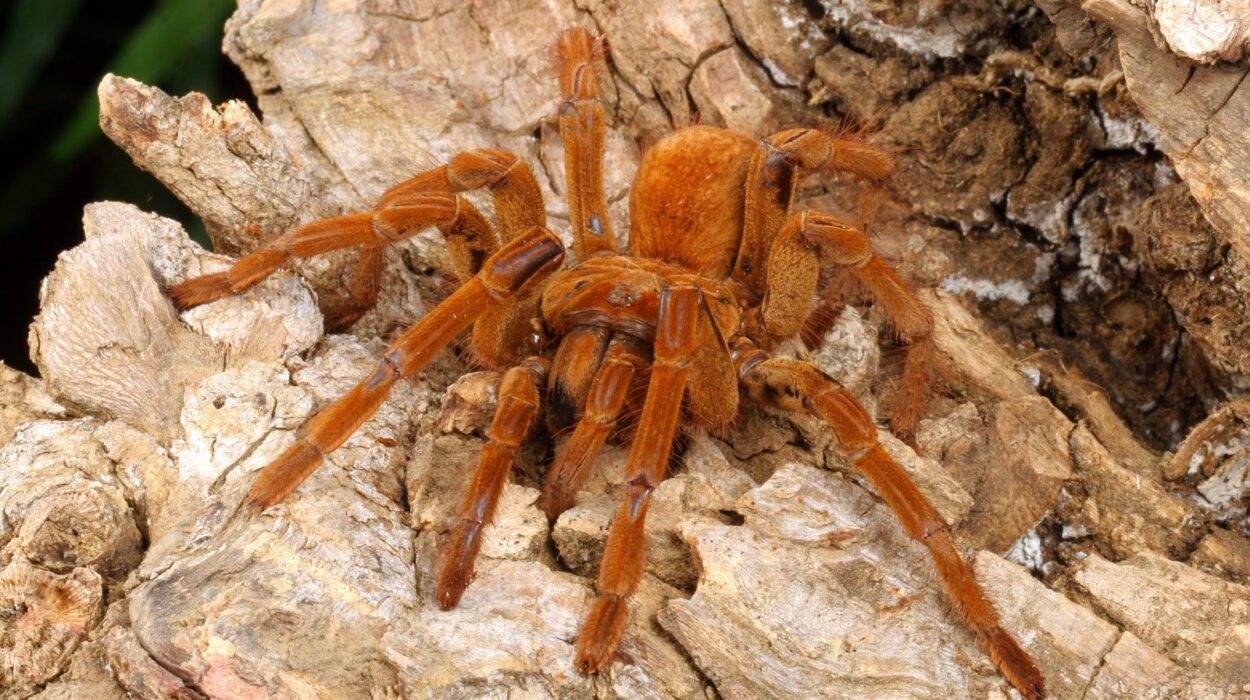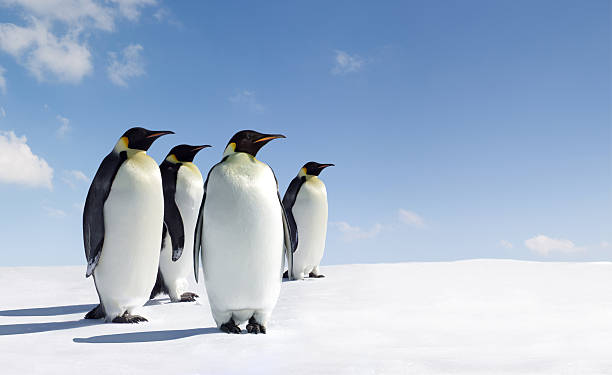In the vast, silent expanse of the Arctic, where the world turns white and the air itself seems made of glass, a solitary figure moves across the frozen sea. A mountain of fur and muscle, yet as graceful as a whisper. Its eyes are black mirrors of the endless sky, its breath a soft cloud in the biting air. The polar bear—Ursus maritimus—is both hunter and myth, survivor and symbol. To watch one stride across the ice is to witness the power and fragility of life at the edge of the world.
The polar bear is not merely an animal—it is an embodiment of the Arctic’s spirit. Its story is as much about biology as it is about endurance, adaptation, and the ancient dialogue between predator and planet. In its strength we see resilience; in its struggle, the truth about the changing Earth we all share.
Origins of a Northern Giant
The story of the polar bear begins long before the ice sheets that define its home today. Around 500,000 years ago, a population of brown bears in northern Europe or Siberia began to follow the retreating ice northward. Over thousands of generations, they evolved into something new—an apex predator perfectly sculpted by the cold.
Genetic studies reveal that the polar bear and the brown bear still share over 98% of their DNA. They are close relatives—cousins divided not by species, but by survival strategy. The polar bear’s adaptations are a masterpiece of evolution: white fur that conceals it on the ice, a streamlined body for swimming, and a metabolism tuned to extract energy from fat rather than plants.
These changes were not sudden. Nature worked slowly, sculpting with ice and hunger. Each mutation that offered a survival advantage—thicker fur, larger paws, greater insulation—was passed on until the Arctic’s ultimate hunter emerged.
Anatomy of Survival
Everything about the polar bear’s body is a testament to its environment. It is the largest land carnivore on Earth. Adult males can weigh between 400 and 700 kilograms, with exceptional individuals surpassing 1,000 kilograms. Females are smaller but still formidable, averaging around 250 kilograms. Despite their size, they move with astonishing grace, capable of covering vast distances in search of prey.
Beneath its white fur lies black skin—a natural heat absorber. The bear’s two-layered coat traps air and provides insulation against temperatures that can plunge below –40°C. Beneath that, a layer of blubber up to 10 centimeters thick acts as both energy reserve and armor against the cold.
Its paws are enormous—up to 30 centimeters wide—serving as snowshoes that distribute its weight over thin ice and paddles that propel it through icy water. Each foot is lined with small papillae, tiny rough bumps that improve traction on slippery surfaces.
The polar bear’s nose can detect the scent of a seal nearly a kilometer away, even through thick snow. Its eyesight and hearing are keen, but it is its sense of smell that defines it. The Arctic is a land of silence and distance; scent is the language that bridges it.
Its metabolism is tuned to fat—a necessity in a world where plants are scarce. The polar bear’s digestive system is specialized for processing high-fat diets, primarily from seals. This dietary specialization has shaped not only its body but its behavior, physiology, and even reproductive cycles.
The Master of the Hunt
The polar bear is a marine mammal in every sense but name. Though it spends much of its life on sea ice, it depends entirely on the ocean for food. Seals, especially ringed and bearded seals, form the cornerstone of its diet.
The bear’s hunting method is both patient and brutal. It uses a technique called still-hunting—waiting silently beside a seal’s breathing hole in the ice, sometimes for hours or even days. When the seal surfaces to breathe, the bear strikes with lightning speed, smashing through ice with its massive forepaws.
Sometimes it stalks seals resting on the ice, crawling low to avoid detection before charging in a burst of speed. In summer, when the ice melts and seals become harder to catch, polar bears turn opportunistic, scavenging whale carcasses, hunting seabirds, or even eating kelp.
Despite their power, polar bears fail more often than they succeed. A successful hunt may come only after multiple attempts. The Arctic is a land where abundance and starvation coexist. One well-fed seal can sustain a bear for days; one missed opportunity can mean a long, hungry march across the ice.
Life on the Sea Ice
To the polar bear, sea ice is not merely habitat—it is life itself. The ice is its hunting ground, its highway, its resting place. It drifts with the seasons, expanding in winter and retreating in summer.
During the long Arctic winter, bears roam the frozen seas, following the ice edge where seals are plentiful. In spring, females give birth in snow dens, hidden sanctuaries where new life begins. In summer, as the ice melts, some bears are stranded on land, fasting until the ocean freezes again.
Their lives are governed by the rhythm of freeze and thaw. As climate change accelerates and sea ice diminishes, this rhythm is being broken. The bears must now travel farther, swim longer, and eat less to survive. The world they have mastered for millennia is melting beneath their feet.
The Long Journey of the Mother Bear
Perhaps no story in the Arctic is as moving as that of the mother polar bear. After mating in the spring, a fertilized egg remains dormant within her body for months. Only when she has gained enough fat to sustain herself through the winter does the embryo begin to develop—a process known as delayed implantation.
In late autumn, the pregnant female digs a den into a snowdrift, creating a womb within the frozen earth. There, she gives birth to one to three cubs, blind, helpless, and no larger than guinea pigs. For three months, she nurses them in total darkness, her body sustaining them on stored fat.
When spring light returns, she emerges with her cubs—thin, weak, but alive. Her first task is to find food, for she has not eaten in nearly eight months. The cubs cling to her side as she leads them across the snow, teaching them the art of survival—how to hunt, swim, and navigate the ever-shifting landscape.
The bond between mother and cubs is fierce and tender. Every lesson she gives, every kill she makes, every risk she takes is for their survival. After two to three years, she leaves them to face the world alone. Her legacy continues in the rhythm of their paw prints across the ice.
A Life Measured in Seasons
Time moves differently in the Arctic. For the polar bear, life is measured not in years but in seasons—each one bringing new challenges and opportunities.
Spring is the season of renewal, when seals give birth and food is abundant. Summer is a time of scarcity, as the ice retreats and the bears endure long swims or fasting on land. Autumn brings the promise of cold, when the sea freezes again and the bears can hunt. Winter, though harsh, is a time of relative stability—ice thick, prey steady, and life in balance.
In this cyclical existence, the polar bear embodies resilience. It thrives where few can, enduring hunger, solitude, and extreme cold with quiet strength. Its life is not easy, but it is deeply attuned to the pulse of its world.
The Polar Bear’s Mind
Beyond its physical prowess lies a remarkable intelligence. Polar bears are problem-solvers, capable of planning, remembering, and improvising. They have been observed covering their black noses with their paws while stalking prey, reducing visibility against the snow. They manipulate ice and snow, use floating debris as platforms, and learn from past experiences.
Their curiosity is legendary. Explorers have told of bears dismantling sleds, opening food containers, and investigating human camps with almost childlike fascination. In captivity, they display signs of boredom and frustration when deprived of mental stimulation, suggesting a complex inner world.
The polar bear’s intelligence is not human-like but perfectly suited to its environment. It understands ice and wind, scent and silence. It reads the Arctic’s moods in ways no machine ever could.
The Arctic Landscape: A Realm of Extremes
The Arctic is both cradle and crucible. It is a land of paradoxes—frozen yet alive, desolate yet teeming with energy. For the polar bear, it offers both abundance and peril.
The region spans the northernmost parts of Canada, Alaska, Greenland, Russia, and Norway. Temperatures can plunge below –50°C, and winds can sculpt the snow into towering drifts. Yet beneath the ice lies a rich marine ecosystem, fueled by sunlight and plankton, supporting seals, whales, and fish—the foundation of the polar bear’s world.
But this world is changing. The Arctic is warming nearly four times faster than the rest of the planet. Sea ice forms later and melts earlier. The bears, once rulers of the ice, now find themselves exiled from their own kingdom for longer stretches each year.
The Climate Crisis: A Kingdom Melting Away
The most tragic chapter of the polar bear’s story is unfolding now. As sea ice declines due to global warming, polar bears are losing their hunting grounds. Without ice, they cannot reach seals, their primary food source. Many are forced onto land, where food is scarce.
Longer fasting periods lead to weight loss, reduced fertility, and higher cub mortality. Scientists have documented bears swimming for hundreds of kilometers in search of ice—some drowning before finding it. In parts of the Arctic, populations are already declining.
Yet, the polar bear’s struggle is more than a conservation issue—it is a reflection of our planet’s imbalance. The bear stands as a living symbol of climate change, a silent messenger warning humanity that the fate of the ice is bound to our own.
To save the polar bear is to preserve not just a species but an entire ecosystem—the frozen heart of the Earth.
The Human Connection
Humans have long revered and feared the polar bear. For the Inuit and other Arctic peoples, the bear is not a beast but a sacred relative. They call it Nanuk, the great hunter. In their stories, Nanuk is wise and powerful, a spirit deserving respect.
Indigenous traditions view hunting as a dialogue, not domination. When a polar bear is killed, it is done with reverence, gratitude, and ritual. The bear gives its life, and the hunter honors that gift. Such traditions hold a wisdom modern humanity often forgets: that survival is a relationship, not a conquest.
Today, scientists, conservationists, and Indigenous communities work together to study and protect the bears. Tracking collars reveal their migrations, drones observe their behavior, and climate models predict their future. Each discovery deepens our understanding—and our responsibility.
Polar Bears and the Future of the Arctic
Despite grim headlines, there is still hope. Polar bears are resilient, adaptable, and capable of enduring hardships that would destroy most species. If humans can curb greenhouse gas emissions and protect Arctic ecosystems, the bears can recover.
Efforts to reduce industrial pollution, regulate shipping lanes, and establish protected marine areas are already underway. Local communities are developing coexistence programs to prevent conflict between bears and humans as the bears spend more time on land.
The polar bear’s future depends on global willpower. It is not only about saving an animal but about redefining our relationship with nature.
The Spirit of the North
To stand before a polar bear in the wild is to feel something ancient stir within the soul. Its sheer presence commands awe—a reminder of how small and fragile we are in the face of nature’s immensity. Yet, there is also kinship in that moment, a silent acknowledgment that we share the same Earth, the same air, the same destiny.
The bear’s life is both beautiful and brutal, but it is honest. It lives according to the rhythms of ice and hunger, guided by instincts older than time. It does not take more than it needs. It wastes nothing. In that balance lies wisdom humanity desperately needs to relearn.
As we gaze toward the melting Arctic, we must remember that the polar bear’s story is our own. The same forces that warm the seas and melt the ice shape the future of every living being on this planet. The bear is a mirror of ourselves—our courage, our intelligence, our vulnerability.
Conclusion: The Keeper of the Frozen Soul
The polar bear stands as both a symbol and a survivor—a guardian of the Arctic and a warning to the world. It is the embodiment of nature’s majesty and a testament to evolution’s artistry. But it is also a creature on the edge, its future balanced on the melting line between ice and ocean.
Its story is written in snow, in footprints that may one day vanish. Yet, within that story lies a call—to compassion, to awareness, to action. The fate of the polar bear is not sealed; it rests in our hands, in our choices, in our willingness to protect the fragile beauty of this world.
When the last ice floe drifts beneath the northern stars, may we remember the great white bear who once ruled the frozen seas—not as a ghost of what we lost, but as a reminder of what we could still save.
The polar bear is more than an animal. It is the beating heart of the Arctic, the living soul of the cold, and perhaps, the last great symbol of wilderness itself. And as long as it walks upon the ice, there remains hope—for the Arctic, for the Earth, and for us all.

